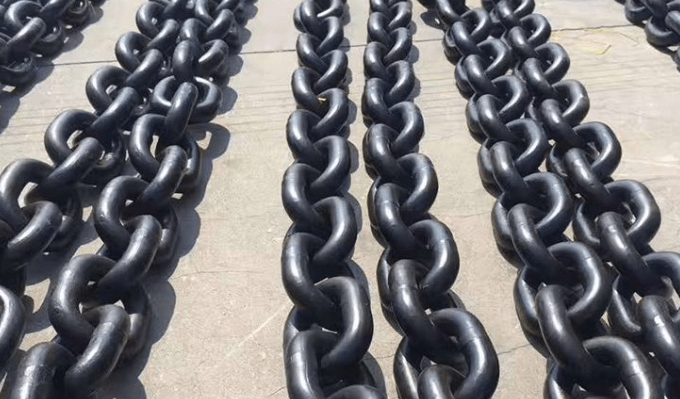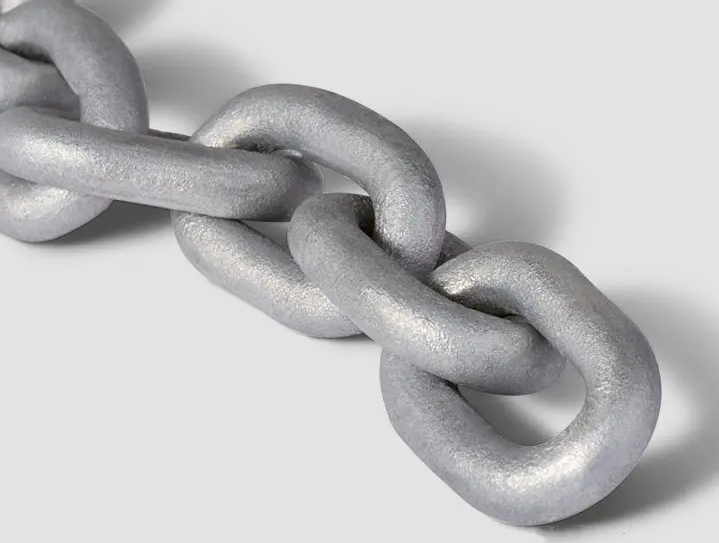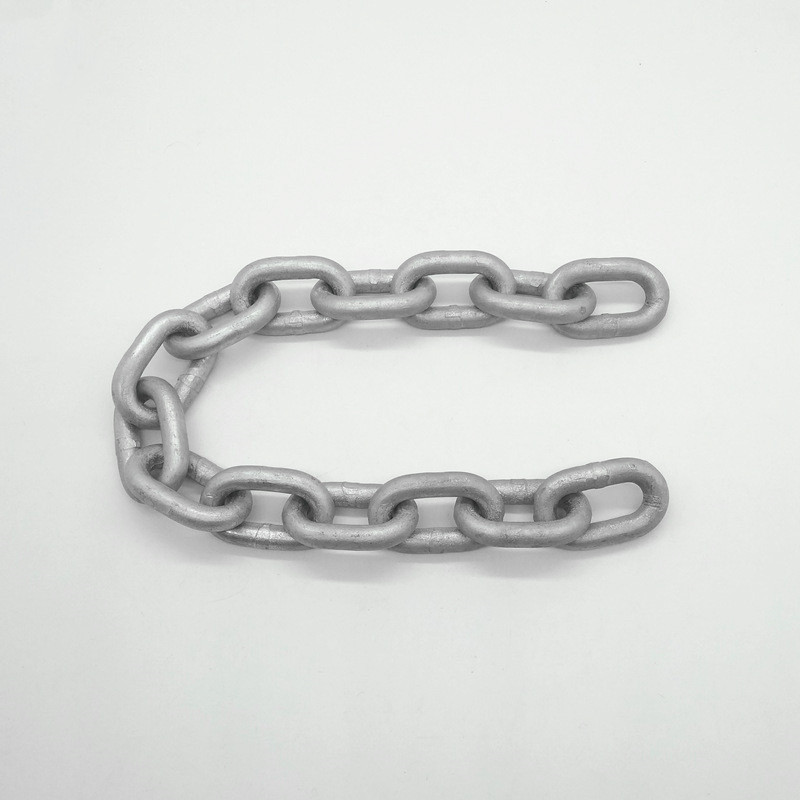Our staff will contact you within 12 hours, You can also contact us through the following ways:
Contact US WhatsApp: +8618766656705
- Email: [email protected]
- Tel: +8618766656705
- Web: https://www.toponechain.com/
If you work in an industry that requires heavy lifting, you know how important it is to have reliable equipment. When it comes to lifting chains, there's no room for compromise. You need the best quality chains to ensure the safety of your workers and the success of your project.
That's why we've put together this guide to help you discover the top-quality lifting chains for heavy-duty applications.

First and foremost, it's important to understand what makes a lifting chain high-quality. There are several factors to consider, including the material, the manufacturing process, and the load capacity.
The material of the chain is crucial, as it determines the strength and durability of the chain. High-quality lifting chains are typically made of alloy steel, which has a high tensile strength and resistance to wear and tear.
The manufacturing process also plays a role in the quality of the lifting chain. Look for chains that have been heat-treated for increased strength and durability. Additionally, chains that have been proof tested are a good indicator of quality, as proof testing ensures that the chain can handle its rated load capacity.
Speaking of load capacity, it's important to choose a lifting chain with a load capacity that meets or exceeds the weight of the load you'll be lifting. Choosing a chain with a lower load capacity than what you need can result in serious accidents and injuries.
Now that you know what to look for in a high-quality lifting chain, let's explore some of the top options on the market.
One popular choice is the Grade 80 lifting chain, which is known for its strength and durability. Grade 80 chains are made of alloy steel and have a load capacity that ranges from 4,300 to 48,600 pounds.
Another option is the Grade 100 lifting chain, which is even stronger than Grade 80. Grade 100 chains are also made of alloy steel but have a load capacity that ranges from 5,700 to 67,200 pounds.
Finally, the Grade 120 lifting chain is the strongest of the three, with a load capacity that ranges from 9,200 to 106,400 pounds. Grade 120 chains are made of alloy steel and are heat-treated for maximum strength and durability.
No matter which type of lifting chain you choose, be sure to follow proper safety procedures when using it. This includes inspecting the chain for damage or wear before each use, avoiding overloading the chain, and using proper rigging techniques.
In conclusion, choosing the right lifting chain is crucial for heavy-duty applications. By understanding what makes a chain high-quality and exploring some of the top options on the market, you can ensure the safety and success of your project.

what is the difference between them?
Lifting chains differ mainly in terms of load capacity and strengthThe Grade 80 lifting chain has a load capacity that ranges from 4,300 to 48,600 pounds, while the Grade 100 lifting chain has a load capacity that ranges from 5,700 to 67,200 pounds. The Grade 120 lifting chain is the strongest of the three, with a load capacity that ranges from 9,200 to 106,400 pounds.
In terms of strength, the Grade 80 chain is weaker than the Grade 100 and Grade 120 chains. The Grade 100 chain is stronger than the Grade 80 chain, and the Grade 120 chain is the strongest of the three.
All three chains are made of alloy steel and have been heat-treated for increased strength and durability. However, the load When choosing a lifting chain, it's important to consider the weight of the load you'll be lifting and choose a chain with a load capacity that meets or exceeds that weight. Using a chain with a lower load capacity than what you need can result in accidents and injuries.
It's also important to follow proper safety procedures when using a lifting chain. This includes inspecting the chain for damage or wear before each use, avoiding overloading the chain, and using proper rigging techniques.
Overall, the Grade 80, Grade 100, and Grade 120 lifting chains are all high-quality options for heavy-duty lifting applications. The choice between them will depend on the specific weight requirements and strength needed for your project.
What are the benefits of using a lifting chain?
1.Increased load capacity: A lifting chain is designed to support heavy loads and can lift much heavier weights than other lifting methods such as ropes or cables.
2.Durability: Lifting chains are made of strong, durable materials such as alloy steel and have been heat-treated to increase their strength and durability. This makes them suitable for heavy-duty lifting applications and can withstand harsh environments.
3.Flexibility: Lifting chains come in a range of sizes and configurations, making them suitable for a variety of lifting applications. They can also be adjusted in length by adding or removing links, providing flexibility in their use.
4.Safety: Lifting chains are designed to meet or exceed safety standards and are subject to rigorous testing and inspection to ensure their safety and reliability. Proper use and maintenance of lifting chains can help prevent accidents and injuries.
5.Cost-effective: Lifting chains are a cost-effective lifting solution, especially when compared to other lifting methods such as cranes or hydraulic lifts. They also have a long lifespan and can be reused for multiple lifting projects.
In summary, using a lifting chain can provide increased load capacity, durability, flexibility, safety, and cost-effectiveness in heavy-duty lifting applications.

How to check whether the lifting chain is qualified?
Checking the lifting chain for qualifications involves several steps, including:
1.Visual inspection: Before each use, the lifting chain should be visually inspected for any signs of wear or damage, including cracks, bends, and kinks. Any damage to the chain should be reported and the chain should be taken out of service until it can be repaired or replaced.
2.Load testing: Lifting chains should undergo periodic load testing to ensure that they can safely support the intended load. This involves subjecting the chain to a load that is a percentage of its rated capacity, typically 25-50%, and observing its performance. The chain should not deform or break under the load, and any signs of wear or damage should be noted.
3.Certification: Lifting chains should be accompanied by a certificate of inspection that verifies the chain's load capacity, material composition, and manufacturing date. This certificate should be kept on file and made available upon request.
4.Compliance with standards: Lifting chains should be manufactured to comply with relevant industry standards, such as ANSI/ASME B30.9 or EN 818. Compliance with these standards can be verified by checking the markings on the chain, which should include the manufacturer's name, chain grade, and load capacity.
5.Regular maintenance: Lifting chains should be regularly inspected and maintained to ensure their continued safety and reliability. This includes cleaning the chain after each use, lubricating it as needed, and storing it properly to prevent damage.
In summary, checking the lifting chain for qualifications involves visual inspection, load testing, certification, compliance with standards, and regular maintenance. Following these steps can help ensure that the lifting chain is qualified and safe to use.
What surface treatments are available for lifting chains? What are their strengths and weaknesses?
There are several surface treatments available for lifting chains, each with their own strengths and weaknesses. Some common surface treatments include:
1.Black oxide: This is a thin layer of black oxide coating that provides some corrosion resistance to the chain. Black oxide is relatively low-cost and easy to apply, but it offers limited protection against corrosion and may wear off over time.
2.Electroplating: This involves depositing a layer of metal, such as zinc or chrome, onto the surface of the chain to provide corrosion resistance. Electroplating offers good protection against corrosion, but it can be expensive and may require specialized equipment.
3.Hot-dip galvanizing: This involves immersing the chain in molten zinc to provide a thick, durable layer of corrosion protection. Hot-dip galvanizing offers excellent corrosion resistance, but it can be expensive and may add weight to the chain.
4.Powder coating: This involves applying a layer of powder paint to the surface of the chain to provide corrosion resistance and enhance its appearance. Powder coating offers good corrosion resistance and can be customized to match specific colors, but it may not be as durable as other surface treatments.

When selecting a surface treatment for lifting chains, it's important to consider the specific application and environment in which the chain will be used. For example, if the chain will be used in a corrosive environment, a surface treatment with high corrosion resistance, such as hot-dip galvanizing or electroplating, may be necessary. On the other hand, if appearance is important, a surface treatment such as powder coating may be more appropriate.
In summary, there are several surface treatments available for lifting chains, each with their own strengths and weaknesses. When selecting a surface treatment, it's important to consider factors such as corrosion resistance, cost, durability, and appearance to choose the best option for the specific lifting application.